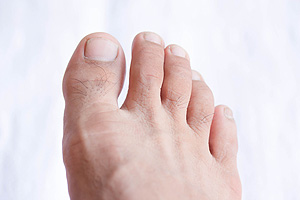Podiatry Associates of Victoria
116-A Imperial Drive
Victoria, TX 77901
(361) 578-2777
Fax (361) 578-2778
Podiatry Associates of Victoria
116-A Imperial Drive
Victoria, TX 77901
(361) 578-2777
Fax (361) 578-2778
 Cuboid syndrome is caused by a dislocation of one of the small cuboid bones located in the foot. The dislocation that causes cuboid syndrome makes the affected bone drop towards the sole of the foot. Cuboid syndrome is typically caused by an injury to the foot or ankle. Symptoms can include pain along the outside of the foot, which is made worse by bearing weight, swelling and tenderness on the outside of the foot, and oftentimes difficulty walking. Treatment typically includes manipulation of the bone to return it to its correct position and then taping and bracing the foot to help the bones stay in the correct position. If you are experiencing and type of foot pain, or would like more information about cuboid syndrome, please consult with a podiatrist today.
Cuboid syndrome is caused by a dislocation of one of the small cuboid bones located in the foot. The dislocation that causes cuboid syndrome makes the affected bone drop towards the sole of the foot. Cuboid syndrome is typically caused by an injury to the foot or ankle. Symptoms can include pain along the outside of the foot, which is made worse by bearing weight, swelling and tenderness on the outside of the foot, and oftentimes difficulty walking. Treatment typically includes manipulation of the bone to return it to its correct position and then taping and bracing the foot to help the bones stay in the correct position. If you are experiencing and type of foot pain, or would like more information about cuboid syndrome, please consult with a podiatrist today.
Cuboid syndrome, also known as cuboid subluxation, occurs when the joints and ligaments near the cuboid bone in the foot become torn. If you have cuboid syndrome, consult with one of our podiatrists from Podiatry Associates of Victoria. Our doctors will assess your condition and provide you with quality foot and ankle treatment.
Cuboid syndrome is a common cause of lateral foot pain, which is pain on the outside of the foot. The condition may happen suddenly due to an ankle sprain, or it may develop slowly overtime from repetitive tension through the bone and surrounding structures.
Causes
The most common causes of cuboid syndrome include:
Symptoms
A common symptom of cuboid syndrome is pain along the outside of the foot which can be felt in the ankle and toes. This pain may create walking difficulties and may cause those with the condition to walk with a limp.
Diagnosis
Diagnosis of cuboid syndrome is often difficult, and it is often misdiagnosed. X-rays, MRIs and CT scans often fail to properly show the cuboid subluxation. Although there isn’t a specific test used to diagnose cuboid syndrome, your podiatrist will usually check if pain is felt while pressing firmly on the cuboid bone of your foot.
Treatment
Just as the range of causes varies widely, so do treatments. Some more common treatments are ice therapy, rest, exercise, taping, and orthotics.
If you have any questions, please feel free to contact our office located in Victoria, TX . We offer the newest diagnostic and treatment technologies for all your foot care needs.
Read more about All About Cuboid Syndrome